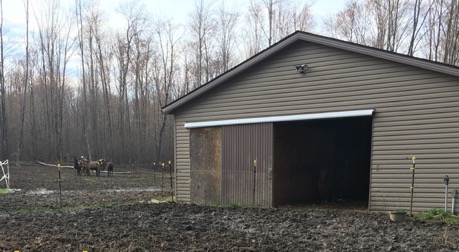Equestrian Property Pre-Purchase Tips: Soils & Mud
- Clay Nelson
- Aug 10, 2019
- 4 min read
Updated: Jan 24, 2020
One of the services we provide at Sustainable Stable is helping our clients find the equestrian property that is right for them -- one that works with their specific needs and budget -- through our equestrian property pre-purchase consultations.
While real estate agents are bound by specific responsibilities under the 'principal/agent' relationship, including fiduciary duties designed to protect your interest, there are critical aspects of buying an equestrian property that need to be considered that often go beyond these legal requirements. That is why it is well worth hiring an experienced professional that can work with you (and your realtor) to identify the equestrian property that is right for you, one who acts independently because they have no financial stake as to whether or not you buy a particular property.
When we are hired to provide horse property pre-purchase consultation services, one of the first things I look at is information on the type of soils that exist at the property. This information can be found through the US Department of Agriculture’s online Web Soil Survey (WSS) (https://websoilsurvey.sc.egov.usda.gov/App/HomePage.htm). While there is a lot of information that can be gathered through USDA’s online WSS portal, two soil properties we look at very closely are:
1) Hydric rating – As stated in the WWS report, “Hydric soils are defined by the National Technical Committee for Hydric Soils as soils that formed under conditions of saturation, flooding, or ponding long enough during the growing season to develop anaerobic conditions in the upper part.”
I recognize there is some technical terminology in the definition above. The important take home message is that if there are hydric soils on the property you are considering for purchase, you are going to have mud issues, and, more than likely, 365 days out of the year. One thing to keep in mind is that often times when raw, forested land is purchased that hasn’t been cleared yet, these hydric areas are not always noticeable by the naked eye.
2) Hydrologic Soil Group– The second important soil property I look at is hydrologic soil group. Below is the description for hydrologic soil group copied from the WWS report.
“The soils in the United States are assigned to four hydrological groups (A, B, C, and D). The groups are defined as follows:
Group A. Soils having a high infiltration rate (low runoff potential) when thoroughly wet. These consist mainly of deep, well drained to excessively drained sands or gravelly sands. These soils have a high rate of water transmission.
Group B. Soils having a moderate infiltration rate when thoroughly wet. These consist chiefly of moderately deep or deep, moderately well drained or well drained soils that have moderately fine texture to moderately coarse texture. These soils have a moderate rate of water transmission.
Group C. Soils having a slow infiltration rate when thoroughly wet. These consist chiefly of soils having a layer that impedes the downward movement of water or soils of moderately fine texture or fine texture. These soils have a slow rate of water transmission.
Group D. Soils having a very slow infiltration rate (high runoff potential) when thoroughly wet. These consist chiefly of clays that have a high shrink-swell potential, soils that have a high water table, soils that have a claypan or clay layer at or near the surface, and soils that are shallow over nearly impervious material. These soils have a very slow rate of water transmission.”
Ideally, for equestrian properties, we like to see the presence of soil groups B and C. With Hydrologic Soil Group A soils, you will almost never have a mud issue, but it will be difficult to grow good pasture grass, as the soils won’t retain enough moisture for good grass growth. With Hydrologic Soil Group D soils, on the other hand, your soils will turn to mud as soon as you get the first heavy rain. Dry lots, laneways and heavy use areas on these soils will need to be designed with substantial footing and drainage improvements in order to avoid mud issues, which of course means higher site improvement costs. (quick side note: the main difference between hydric soils and hydrologic group D soils is that hydrologic group D soils will only be wet/muddy after it has rained, whereas hydric soils will remain wet throughout the year).
The soils information above can quickly provide you with very accurate information on important equestrian property management issues, like mud and pasture management. However, unless you know where to look, you may never find out until after you have purchased the property. But, as they say, a picture is worth a thousand words. So with that in mind, here are a few pics of a properties that were built on top of hydric or hydrologic group D soils.
The information presented above provides just one example of the type of info we review when conducting an equestrian property pre-purchase consultation to help our clients find the equestrian property that is right for them.










